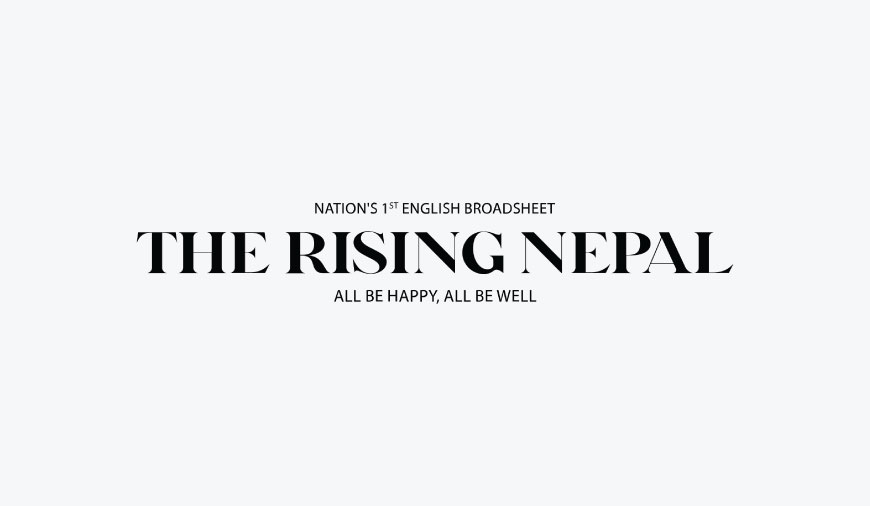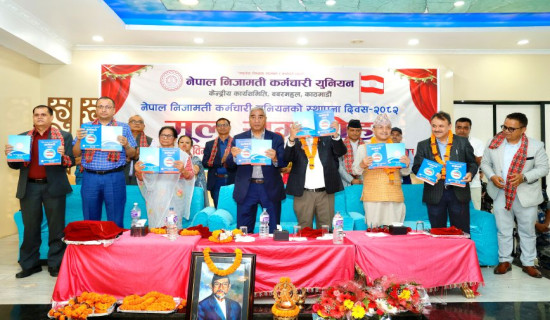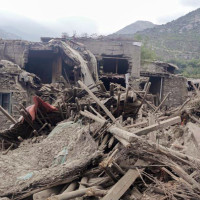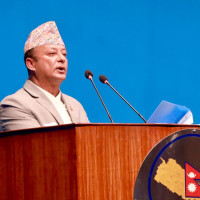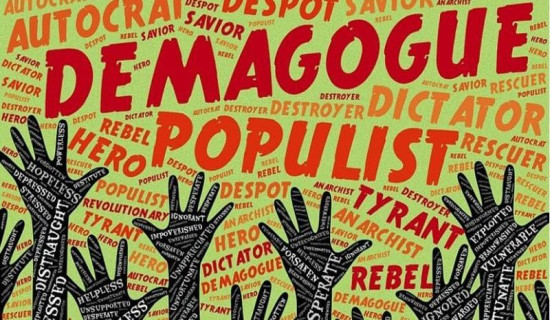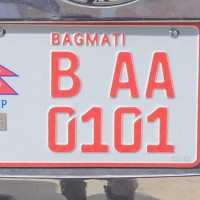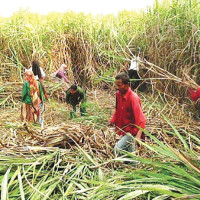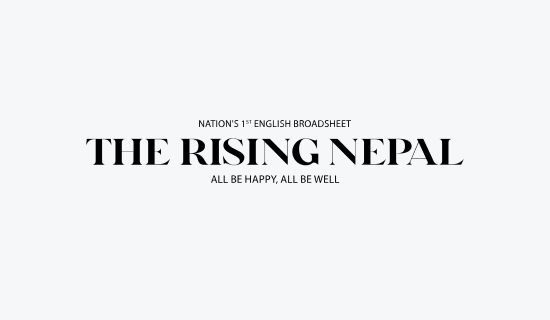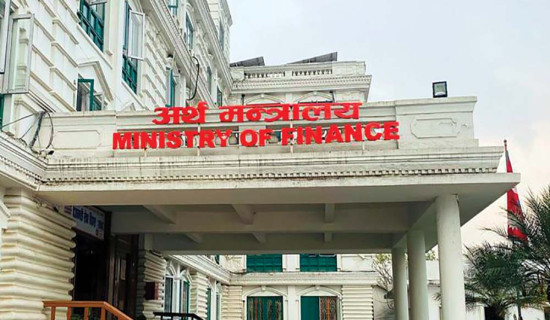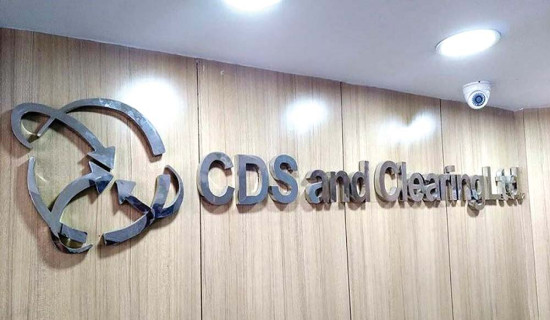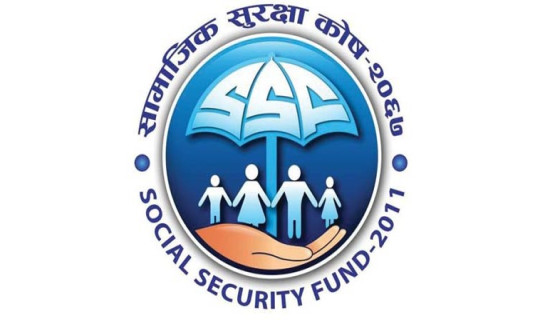- Thursday, 4 September 2025
A decade on, VGF still remains limited to rhetoric at expense of development projects
Kathmandu, Feb. 2: It's been more than one-and-a-half decades since the country started talking about the 'Viability Gap Funding' (VGF) and its application in infrastructure projects especially ones that would be developed through the Public-Private Partnership (PPP) model but the country is still in the phase to have one.
After several years' discussion as well as demand from the private sector and promises from the government, the PPP Policy, 2015 promised to formulate the manual to operate VGF within a year.
Noting the lack of policy arrangement on proper sharing of risks while executing large infrastructure and development projects of national importance developed jointly on PPP concept, lack of proper arrangement to address VGF, the PPP Policy had announced to create the Fund in its policy implementation plan.
The VGF is a financial incentive that supports essential infrastructure projects by bridging the funding shortfall for initiatives that are economically significant but not immediately financially sustainable.
But it took about four years to enact a law on PPP despite the policy's promise to formulate Act, rules, guidelines and manuals within a year while Public-Private Partnership Regulation was introduced a year after in 2020.
This policy was to act as a base while formulating Acts, rules, guidelines and manuals.
The Public-Private Partnership and Investment Act, 2019 also wouldn't have been created had the government not been organising the Investment Summit that year. The Investment Board of Nepal (IBN) took the initiative in collaboration with the concerned ministries to prepare the draft of the law.
The enactment of the PPP and Investment Act, 2019 was presented to the potential foreign investors as one of the major reform initiatives in infrastructure project development in Nepal then.
The PPP Policy had also addressed the recently changed governance structure in the country and incorporated a provision that the local bodies could also amend the 'Public-Private Partnership (for Local Bodies) Policy, 2003’ on the basis of the federal policy.
While the responsibility of establishing the VGF was given to the Ministry of Finance (MoF), the government was supposed to provide financial support through it in the form of direct capital grant to the projects. "Such grants can only be provided when financial income through proposed revenue sources is not sufficient to meet the expenses thus making projects financially unviable," read the Policy while maintaining that such grants shall be made available to PPP projects only to make them financially viable.
To obtain the VGF grants, the Board of Directors of the support seeking project should decide and submit an application to the PPP Centre which is to appraise the project and recommend its eligibility.
As per the condition set by the policy, VGF grants would be accepted on the basis of approved guidelines and only in the condition that there are no adequate and appropriate options left for making those projects financially viable.
No progress in a decade
After a decade of the formulation of the PPP Policy and five-six years following the enactment of the PPP and Investment Act, the country hasn't got the VGF.
As one of the key agencies pushing for the VGF, the IBN is lobbying for the Fund to have it at the earliest.
For the foreign investors, seeking information on the matter, the IBN has posted a clause from the Act on its website: "As per sub-section 1 of section 43 under Public-Private Partnership and Investment Act 2019, Government of Nepal shall establish a Viability Gap Fund for construction, operation and expansion of the projects that yield positive returns in the long run and are important from infrastructure viewpoint but could not yield reasonable financial returns immediately."
Babu Raj Adhikari, Joint Secretary (Technical), of the IBN, said that the deliberations for the implementation of the VGF have started. According to him, although the IBN had recommended the projects like Budhi Gandaki Hydroelectricity Project for the VGF modality, absence of the Fund has impacted its progress.
Meanwhile, in April last year, the MoF had turned down the proposal for investment modality for the Budhi Gandaki HEP (1200-Megawatt capacity) that included VGF on the pretext of the dearth of financial resources. Eight years ago, the government had decided to provide Rs. 940 million to the project to make it commercially bankable.
The national pride project is in a limbo due to insensitivity from the government as it was ping-ponged to China, India and local investment modalities. The government has already spent more than Rs. 43 billion on the project in land acquisition and other preparatory works.
According to a high-official of the MoF, the agenda of VGF has not been accorded priority.
Currently, the Ministry is in the process of formulating a draft of the alternative development financing bill. However, in a statement issued by the MoF on 29 December, 2024, VGF was
not mentioned.
Indian practice
India enacted the 'Guidelines for financial support to Public-Private Partnerships in infrastructure Viability Gap Funding scheme' in 2020 with an objective to make PPP projects commercially viable by providing financial support to bridge the viability gap.
According to the Guidelines, private sector implemented infrastructure projects, selected through open competitive bidding, that aim to provide a service against payment of pre-determined tariff or user charges.
The companies in water supply, solid waste management, health and education sector are entitled to maximum 30 per cent VGF while pilot/demonstration projects in health and education can get up to 40 per cent. Project of other eligible sectors can have up to 20 per cent VGF.
The Guidelines mention that the project seeking VGF up to INR 2 billion can be approved by the Empowered Committee, and project costing above that limit should be approved from the Finance Minister.
India has different disbursement modality for the PPP projects. Capital Grant VGF is disbursed after the private sector company has subscribed and expended the required equity contribution. Likewise, Operational Grant VGF is disbursed annually for the first five years post-commencement date based on audited annual accounts.
The VGF is released in proportion to debt disbursements by the Lead Financial Institution (LFI) while the latter is also responsible for monitoring the project's compliance with agreed milestones and performance levels. The progress report must be submitted to the Empowered Committee (EC) on a quarterly basis.
For the disbursement of the VGF, a tripartite agreement among the EC, LFI and developer company is required, and if a project is terminated and not continued as a PPP, 90 per cent of the Capital Grant disbursed must be recovered from the owner and paid to the Ministry of Finance. If the project is re-bid and continued as a PPP, VGF may not be recovered.
VGF success story in clean energy
While the authorities are still grappling to formulate an effective Viability Gap Funding (VGF) policy and fund, a donor-driven VGF initiative has been immensely successful in Nepal's clean energy sector. The Alternative Energy Promotion Centre (AEPC) stated that this is an example of a successful initiative in the sector.
Executed by the AEPC, Nepal Renewable Energy Programme (NREP) - a Government of Nepal programme supported with financial assistance from the British Embassy in Kathmandu, the programme has enhanced energy transition, security and access in various parts of the country.
According to Prem Sagar Subedi, Deputy Team Leader at the NREP, the VGF has proven better and more effective than the grant-based promotion modality in the clean and renewable energy sector.
The programme has eight different windows to support the private sector clean and renewable energy projects of up to 1 megawatt. It provides a 50 per cent discount on interest rates for five years if the project takes the fund as a loan while in another modality it provides Rs. 1.5 per unit on the generation-based incentives for the next five years.
Approved in 2021 by the Ministry of Energy, Water Resources and Irrigation (MoEWRI), the VGF is supported by the consortium led by DAI Global UK which includes Winrock International as an implementing partner. It has a commitment of 4.5 million Pounds (Rs. 771.5 million).
Subedi said that this amount is likely to suffice to cover about 100 energy projects. "Of the 80 projects approved, about 30 projects have been completed with the support from this fund. However, NREP targets for 100 projects," he said.
Executive Director of the AEPC, Nawa Raj Dhakal, the initiative has supported in mobilising private investment which wouldn't have been attracted to the clean energy sector otherwise.
"This has multiple benefits including the better operation and management of the projects. The private sector handles the projects in a better way since it has to recover the investment," he said.
Recently, the Programme has approved a mini-hydro project with 911 KW being developed by the local government and private entrepreneurs in the Amadablam area. This project of Rs. 610 million is likely to provide a regular income of about Rs. 8 million to the local body.
With the 'aggressive' expansion of national grid electricity to even the remotest areas of the country enhanced people's access to clean energy but at the same time, the growing demand crated a shortage. Initiative like the VGF in clean energy will fulfill the gap while at the same time contributing to the energy quality as well.
Sustainability of VGF
Information Officer of the AEPC, Ishwar Chandra Khanal, said that the result of the VGF is quite satisfactory. However, all the stakeholders expressed concerns about the sustainability of the fund since the donor-provided support is quickly depleting.
"We are lobbying with both the government and the development partners to ensure the sustainability of the fund. Our effort would be to include it in the budget of the coming year," said Khanal.
Stakeholders are hopeful of government support given the successful track record of the programme. "This is a tested model. It has adopted an online digital modality for project application and approval of the VGF. All the processes are transparent. We can achieve a lot through small scale investment through this model," said Subedi.
The companies vying for the VGF should submit a concept note in the first phase, followed by full detail of the project. A panel of independent experts evaluate the application and approve the eligible ones for the investment.
Through the VGF, NREP has supported fuel-switching initiatives in food industries in Kathmandu, distributed more than 40,000 electric stoves along with managing facility to supply, maintenance and energy reliability, and installed charging stations in PPP model. The programme is offering 50 per cent grant in charger and accessories.
"It has received a tremendous response. We have received hundreds of applications," said Subedi.

